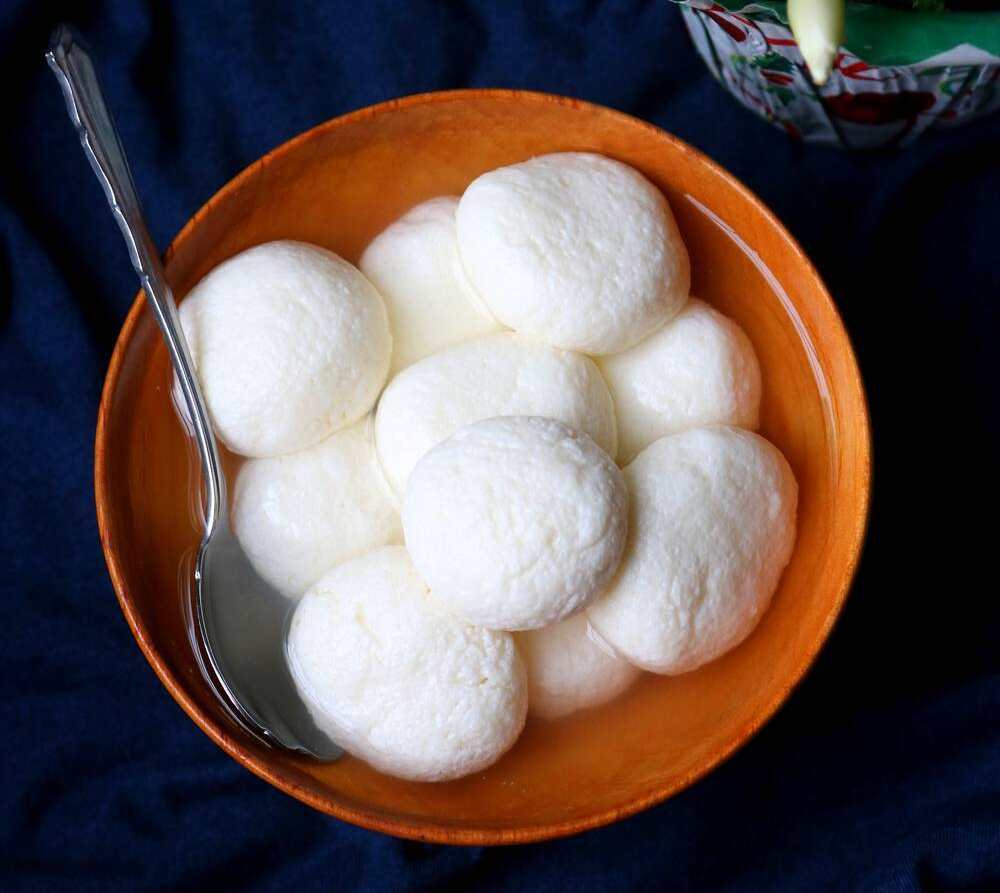Divine delicacy
Though there’s been a continuing debate between West Bengal and Odisha around the origin of Rosogolla, none can contest the fact that it remains India’s best-loved culinary invention

The bitter 'battle-lines' over the 'luscious' Rosogolla — described by the British celebrity chef William Harold as 'a bowl of sweet, syrupy, soft cheese balls' — ended in a 'draw of sorts' when both the Bangla and Odia claims of the geographical origin of this sweet were accepted by the Chennai-based GI registry, first for Bangla Rosogolla in 2017 and then for Odia Rosogolla in 2019. While the debate on the origin and the 'divine connect' of this delicacy will continue to engage aficionados on both sides of the divide with firm commitments about the special quality of their Rosogolla, there is a clear unanimity that from the bylanes of Kolkata and the temples of Puri to the power corridors of Rashtrapati Bhawan in Lutyens Delhi, Rosogulla remains one of India's best-loved culinary inventions.
Rosogolla Utsob and Rosogolla Dibasa
The dispute between the two states continues – on social media and in newspaper columns, as also in tweets from the Chief Ministers. There are two Rosogolla days to celebrate this delicacy — in Bengal, it is called Rosogolla Utsob and the Odiya celebration is called Rosogolla Dibasa. The Utsob has been held on December 28 each year from 2017 while the Odisha Small Scale Industries Corporation — the holder for the GI in Odisha — has marked the Dibasa on the tithi (auspicious date) of Niladri Bije as per the lunar calendar, marking the return of deities to the temple after the Ratha Yatra of nine days.
Without prejudice to either claim, the column will first narrate the Odisha story on account of its antiquity. As per the tradition, Rosogolla evolved from Khira Mohana, which later morphed into the Pahala Rosogolla. The legend goes like this: Upset with her husband Lord Jagannath for undertaking the Ratha Yatra without her consent, she locks the Jai Vijay Dwar to prevent his convoy from re-entering the sanctum sanctorum of the temple. To appease her, Jagannath performs the Bachanika by an offering of Rosogolla, and this remains the part of tradition from the 12th century, when the present-day temple structure was first built.
According to folklore, the villagers of Pahala (a village proximate to Jagannath temple) would throw their excess milk until a meandering priest at the Jagannath Temple saw this and taught them the art of curdling, as well as the recipe for Rosogulla. Pahala village soon emerged as the biggest market for chhana-based sweets in the area. This view is contested by Nobin Chandra Das's descendant Animikh Roy and historian Haripada Bhowmik. According to them, "it would have been blasphemous to offer something made from spoiled milk (chhana) to a deity". They also point out that it is not among the fifty-six offerings (or Chhapan Bhog) in the early records of the Jagannath Temple. In the absence of an established canon or scriptural authority on this, the claims and counter claims continue unabated. The culinary historian Pritha Sen suggested that in the mid-18th century, many Odia cooks were employed in Bengali homes; they may have introduced Rosogolla along with many other Odia dishes to their patrons. Another view is that Bengali devotees visiting Puri might have carried the recipe for Rosogulla back to Bengal.
However, this view is strongly contested by food historians KT Acharya and Chitra Banerji. According to them, there are no references to cheese (including chhana) in India before the 17th century. The milk-based sweets were mainly made up of khoa before the Portuguese influence led to the introduction of cheese-based sweets. The first Bengali Rasogulla is credited to Nobin Chandra Das who created the sweet in his Bagbazar shop (1868).
Bangladesh too has thrown its hat in the ring by claiming that Portuguese settlers made sweet curd cheese and Sandesh-like confections from milk in the 16th century in Barisal — an important trading post of its time. It was picked up by Nobin Chandra Das, who too belonged to Barisal. He invented the mixture of chhana and semolina in boiling sugar syrup in contrast to the mixture sans semolina in the original Rosogulla in his sweet shop located at Sutanuti (present-day Baghbazar). The first major patron of KC Das Rosogulla was Bhagwandas Bagla, a Marwari businessman who bought huge amounts for distribution during festive occasions, and spread the fame beyond the borders of the state .
Writing in the Banglar Khabar (1987), food historian Pranab Ray averred that a man named Braja Moira had introduced Rasgulla in his shop near Calcutta High Court in 1866, two years before the venture of KC Das. In 1906, Panchana Bandyopadhyay wrote that Rosogulla was invented in the 19th century by Haradhan Moira, a Phulia-based sweet maker who worked for the Pal Chowdhury's of Ranaghat. According to Mistikatha, a newspaper published by West Bengal Sweetmeat Traders Association, many other people prepared similar sweets under different names such as gopalgolla (prepared by Gopal Moira of Burdwan district), jatingolla, bhabanigolla and rasugolla. According to culinary writer Michael Krondl, "irrespective of its origin, the rasgulla likely predates Nobin Chandra Das", and even the sales brochure of the company run by Das's descendants' states, "it is hard to tell whether or not cruder versions of similar sweets existed anywhere at that time". Even if they did, they did not match the quality of Nobin Chandra, and having failed to excite the Bengali palate, they slipped into oblivion. The real fillip to the popularity of the Rosogolla, both in India and abroad can be traced to the introduction of vacuum packing by Nobin Chandra's son Krishna Chandra Das in 1930. No wonder then, that this establishment claims to be the progenitor of the modern-day Rosogolla and made a nine-kg Rosogulla in 2017 to mark the 150th anniversary of this delectable sweet!
Views expressed are personal



